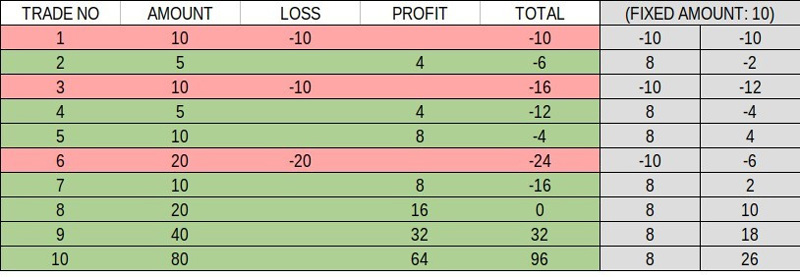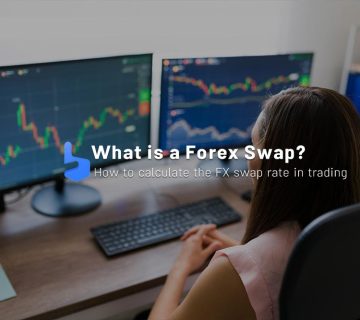What you are about to read:
The world of Forex is filled with a wide spectrum of strategies that traders can use to maximize their profits and minimize their losses. One of these strategies is the Anti-Martingale strategy, which has gained popularity among traders over the years. In this article from Brokerland, we will take a closer look at what this strategy is, how it works, and whether it is a suitable strategy for Forex traders or not.
What is the Anti-Martingale Strategy?
The Anti-Martingale strategy is a trading approach designed to maximize profits by increasing position size in winning trades and decreasing position size in losing trades. This strategy is based on the principle that traders should increase their capital exposure in the market when winning and decrease it when losing.
This is in contrast to the Martingale strategy, which was discussed in the previous article and involves increasing the trade size after each losing trade in the hope of recovering losses in the next trade. The Anti-Martingale strategy is sometimes referred to as the “Reverse Martingale” strategy, and it is based on the idea that markets tend to move in the direction of the prevailing trend. Therefore, the strategy involves increasing position size when the trade moves in the desired direction and decreasing or exiting the trade altogether in case the market moves against the trader.
How Does Anti-Martingale Strategy Work in Forex?
In the Anti-Martingale strategy, traders aim to capitalize on the market’s tendency to trend in the prevailing direction. This strategy involves increasing the trade size when the trade moves in the desired direction and, in case of a market move against the trader, reducing the position size or exiting the trade altogether.
To illustrate how the Anti-Martingale strategy works, let’s consider an example. Suppose a trader buys a currency pair at 1.2000 with a stop loss at 1.1900 and a take profit at 1.2200. The trader decides to use the Anti-Martingale strategy and starts with a position size of 1 lot. As the trade moves in the desired direction, the trader increases the position size by adding another lot when the price reaches 1.2050 and again when the price reaches 1.2100.
If the market moves against the trader, and the price drops to 1.1950, the trader reduces the position size by selling one lot. If the price falls below 1.1900, the trader exits the trade altogether. This approach allows the trader to maximize profits during winning trades and minimize losses during losing trades.
Pros of the Strategy
Like any trading method, such as sentiment analysis or order block, the Anti-Martingale strategy has its own pros and cons and cannot be a flawless approach to trading in the market.
One of the main advantages of the Anti-Martingale strategy is that it allows traders to maximize their profits in winning trades and minimize losses during losing trades. As mentioned above, this approach is based on the principle of positive feedback.
Another advantage of the Anti-Martingale strategy is that it can help traders control their risks. By reducing position size or exiting the trade entirely when the market moves against them, traders can limit their losses and avoid getting caught in losing positions.
The Anti-Martingale strategy can also be used in conjunction with other trading strategies, such as technical and fundamental analysis. By combining different strategies, traders can increase their chances of success in the Forex market and achieve more sustainable profits in the long term.
Cons of the Strategy
One of the main drawbacks of the Anti-Martingale strategy is that it requires traders to have high discipline and control over their emotions. This is because the strategy involves increasing position size during winning trades, which can be tempting for traders to become greedy and use excessive leverage in their trades.
Another disadvantage of the Anti-Martingale strategy is that its execution can be challenging. This is because traders need to have a good understanding of the market and be able to determine when the market is moving in the desired direction. It requires a certain level of skill and experience, which may take time to develop.
Ultimately, the Anti-Martingale strategy is not suitable for all traders. This is because the strategy requires traders to tolerate a specific level of risk and volatility in the market. Traders who are risk-averse or cannot tolerate instability in market fluctuations may find this strategy too risky and may prefer to use a different approach, such as the Wedge pattern trading strategy in Forex.
Example Anti-Martingale Strategy in Forex
Let’s consider a scenario where a trader is using the Anti-Martingale strategy and wants to capitalize on the upward trend of the EUR/USD currency pair. When the market shows signs of an upward trend, the trader might start by opening a small position with one lot. If the trade proves profitable, the trader increases the position size to two lots, and if the trade continues to be profitable, they may further increase it to three lots.
However, if the trade starts to go against the trader and market conditions suggest that the upward trend is no longer valid, the position size decreases to one lot or is entirely closed.
As a numerical example, suppose the trader enters the market with a single lot position at a price of 1.1500. If the price rises to 1.1550, the trader increases the position size to two lots. If the price continues to 1.1600, the trader further increases the position size to three lots. However, if the price drops back to 1.1550, the trader, depending on market conditions, reduces the position size to two lots or even one lot.
In this example, the trader employs the Anti-Martingale strategy to increase the position size in their favor as the market moves, and when the market moves against them, they decrease the trade size or exit entirely. By doing so, the trader can control their risk, maximize profits in winning trades, and limit losses in losing trades.
Summary
In this article of the Brokerland Forex learning series, we explored and introduced the Anti-Martingale strategy—a trading strategy designed to maximize profits by increasing position size in winning trades and decreasing it in losing trades. This strategy is based on the principle of positive feedback and is tailored to take advantage of the market’s tendency to move in the dominant direction.
While the Anti-Martingale strategy has its advantages, such as allowing traders to maximize profits during winning trades and control their risks, it also has drawbacks, including the need for high discipline and emotional control. The decision to use the Anti-Martingale strategy in Forex trading depends on various factors, such as the trader’s risk tolerance, trading style, and experience. Traders interested in using this approach should test the strategy in a demo account before implementing it in live trading to see how it performs in different market conditions.











